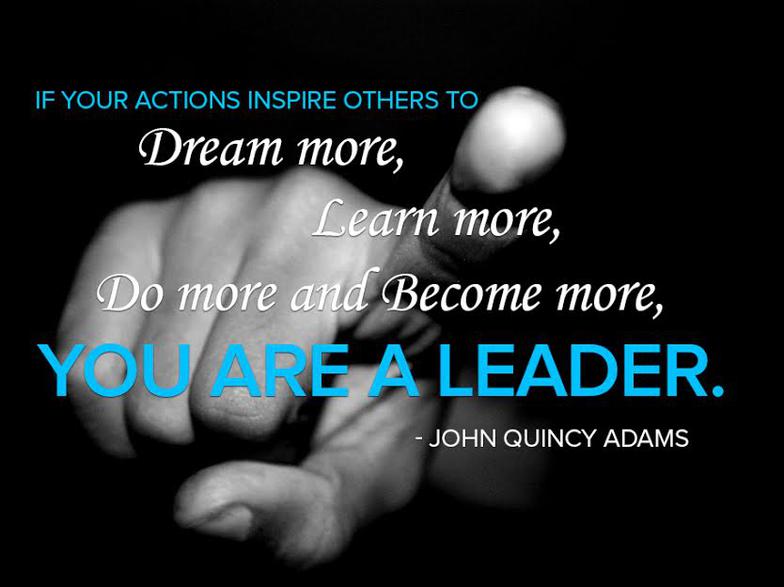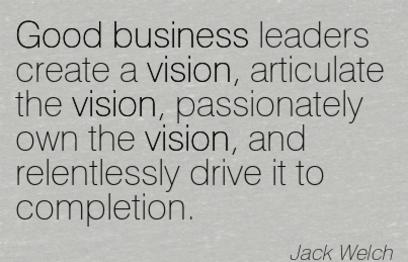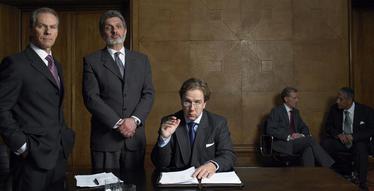LeadershipAdvisoryCouncil.com
"Leadership That Matters" Issues - Strategies - Solutions
BUSINESS LEADERSHIP
HOW TO CHOOSE A MENTOR
By: Bill Treasurer
The benefits of having a mentor are big. A survey of Fortune 500 companies found that 96% of executives credited mentoring as an important development tool and 75% said mentoring played a key role in their career success.
But how do you get a mentor?
Many employees and managers complain about not having a mentor. Such people are usually waiting for the company to assign a mentor to them. Mentoring works much better when the mentee takes responsibility for choosing a mentor.
So, the first place to start is to find one yourself! Below are some characteristics of great mentors:
Respect: Look for someone that others respect. A mentor should be someone who can be looked up to as a role model of the company’s values and ideals and who understands the culture of the organization, its practices and the strategies needed to negotiate them. Additionally, it should be someone that you want to assist you in planning and achieving your career goals.
Broccoli Pointer: A mentor is someone who is capable of pointing out embarrassing things about how you are "showing up" at work. Think of it this way, if you came back from lunch with broccoli in your teeth, a mentor wouldn’t be shy about pointing it out!
Independent Loyalist: While a mentor is someone who is loyal to the company, he shouldn’t have drunken so much of the organizational happy-juice that he can’t think independently. Pick a mentor who has a mind of his or her own.
There for You: Find a mentor who will be available to meet with you regularly. Regular meetings will help to not only build a relationship, but will also enable you and your mentee to address topics on an on-going basis. Create a schedule. Consider meeting every month or two (sooner if you’re experiencing particularly tough work challenges).
Expert in Their Field: Your mentor should have job-related expertise in the field in which you wish to grow. This might be technological or managerial. It is expertise that you may find useful in their current or future roles.
Storytellers: A great mentor is a master storyteller. When you’re struggling with an issue, your mentor should willingly share a story about a similar struggle that he faced in the past.
Lifelong Learner: Experience accumulated through the mentor’s own life of personal issues that are or are likely to be of particular use to the person being mentored. Pick a mentor who constantly strives to be a better leader himself. Ask the mentor who he or she considers to be his or her mentor(s).
The aim of mentoring is to build the capability of you, the mentee. As such, you should always choose a mentor who you feel can respond to your needs in a way that enables you to find your own solutions to problems that you may be dealing with. Ultimately, your mentor should help build you up to eventually have a mentee of your own!
EXECUTIVE BUSINESS LEADERSHIP TRAINING
By: Vivekcis Grewal
Making a manager could be easy as that just requires qualification apart from management leadership training but creating a leader could be a little difficult as apart from business leadership training or executive leadership training it requires attitude. A leader has ability to teach people to become better and efficient and effective for business and the company you work for.
A leader is less defined by his/her own success and more by the success of the people who depend on them for knowledge, guidance and support. The traits of a good management leadership training are as under:-
Communication is the key:- Lack of communication or bad channel of communication has been the root of many problems in management ever since. Proper language use and correct delivery of the information sent should be the priority of business leadership training processes. Executive leadership training should explain to follow honest and open mode of communication in a entity.
Team matters :- Executive leadership training must focus on explaining that a team matters more than anything. Getting the team involved in a process of solving the problem could make them trust the leader and appreciate him in the process and so business leadership training should explain the same to the trainee that it its course material.
Understanding the matter and seeking solution:- A management leadership training should make sure that the trainee leader should keep his ears open to suggestions. The business leadership training should make sure that the leader should be ready to understand the matter and should be ready to seeking solutions from the subordinates if it helps, as involving the subordinates in the decision making may be helpful in boosting the motivational level of the subordinates.
Trust should be emphasized:- Making the subordinates trust the leader is one of the most important traits that has to be emphasized be it management leadership training or executive leadership training program. Trust building is not easy, it needs a lot of effort like active listening and make sure that the issues are handled fairly.Executive leadership training should make it known that building trust could need the leaders to follow steps like open door policy which needs the leader to trust the subordinates in return. And constant feedback will not only let the leader know his popularity, but also build a lot of trust in the minds of the subordinates.
Influence and inspire:- The management leadership training has to make it known that a leader should make himself influential enough that the subordinates could look up-to him with praise and appreciation. The leader taking the business leadership training should be capable of influencing the crowd around him. They could make their point clear and should always end up in a win-win situation, which would help him in building his creditability.
Anyone could be a born leader, but the business leadership training make sure that the leader remains a leader. The tips and suggestions that an executive leadership training could give a potential leader could not always be known beforehand, but when provided with could always help in creating a good leader.
Business Leadership
Over the past several years during the current economic downturn many groups of business professionals have speculated about what it takes to be a leader. Is a leader someone who grows the company and will stop at nothing to get profits? After all, without profits a business cannot operate. However, we have seen that some leaders will stop at nothing to gain the most profits and have no regard for the greater good of society. The term leader can mean a lot of different things to a lot of different people. This paper takes an in depth analysis on the topic of Business Leadership and what clearly defines it.
When analyzing business leadership, the first step is to define some of the traits and characteristics of successful entrepreneurs and business leaders today. With the advent of globalization, the business environment has had an increasing rate of change. With this new change to businesses everywhere, most business markets have become dynamic and volatile. Now more than ever, most companies are looking to their leaders to guide them through these rough waters. All companies are placing a lot more emphasis on business leadership on all different levels throughout their organization.
Managers of the past may have been easily promoted due to large economic growth and may have just been expected to maintain the status quo. Now many managers or successful business leaders have to think outside of the box to constantly deliver growth to their shareholders or superiors. The new business leaders we are seeing in the new economy tend to be visionaries. They look to see how business is changing and try to adapt strategies before any of their markets are impacted. The recent subprime mortgage scandals and housing bubble burst steered several large institutions into bankruptcy. Many companies are now trying to also look for business leaders that will not only keep the profits coming but also build a strong sense of ethics and integrity into their organizations.
After careful investigation and research here are some of the top traits or characteristics noted in most of the business leaders today. Good leaders must be able to keep a clear head and tolerate frustration and stress well. A business leader today must be able to stay calm under adversity and be able to process a clear vision of the actions that need to be taken to accomplish their ultimate goal. One trait of a successful business leader is emotional stability also known as locus of control.
The next trait would have to be self-esteem. When you are a business leader you are constantly being analyzed and many decisions are made quickly. A leader has to know that they will guide the business in the right direction and be confident in their choices. This in turn, can often inspire others in the organization to believe in the same goal or vision.
Drive or need to achieve is often looked at as common trait in business leaders today. If the leader is just satisfied with average results he or she will not continue to push the envelope and often productivity or profits can lack. The drive or need to achieve is rarely filled in a true business leader. They are always looking for the next challenge and create ways to get around obstacles.
Filtering information quickly is also a trait that is held by most business leaders today. Another term used to define this is business acumen. Ted Prince notes "Before the Great Recession, leadership development was essentially a boom-time phenomenon. It could afford to focus on traditional leadership competencies such as interpersonal skills, emotional intelligence and decision making. To some extent, leadership development had atrophied into the study of leadership when things are going well.
Today, we are in a very different place. Business acumen is all about showing how our behaviors directly impact and improve business outcomes, measured in financial and market value terms. Business acumen development aims to fill the chasm in traditional leadership development programs, which involves the behavioral skills that lead to increases in profitability and market value. Business acumen is defined as the capability to bring about positive business outcomes" (Prince).
Optimism is a trait that will be found in every successful business leader. The leader often views problems as a challenge and looks at setbacks as a possible new direction. They are constantly focused on the main goal at hand and will not let many things deter their mindset that the goals will be achieved. If they do not get a sale that day they will still believe they are going to get the sale in the future. Their sense of optimism can often be a motor to keep them driving to their ultimate goals.
Tolerance to ambiguity refers to a person's tolerance to uncertainty and risk. Business Leaders will face this on a day to day basis and have to also possess this trait to be successful in business today. Art Petty writes in his blog that "top performers fight the routine. High performance individuals in all areas of life, from leaders to athletes to great individual contributors work hard everyday to fight the gravitational pull of getting stuck in the proverbial rut. High performance teams and organizations find their comfort not in sameness or routine, but in embracing the ambiguity of the world and the constancy of change and the constant need to change. Many of the best leaders go out of their way to push themselves and their teams to constantly do things different to keep their senses sharp, their individual and collective minds expanding and their ideas fresh" (Petty).
Courage is also a trait that comes up quite often when referring to business leadership. As a leader or entrepreneur you have to have a high tolerance for risk. Generally, when you start out you are all on your own and many more businesses fail than succeed. A true business leader has the gumption to take a calculated risk and keep going when times get slow.
The traits listed above seem to be the most common in the true business leaders today. Some other traits that are highly desirable but may not be found in every business leader are high energy, intuitiveness, maturity, team orientation, empathy and charisma. We can analyze these traits closer to see how a leader can benefit from possessing them.
Generally, as a business leader you have to put in a lot of hours to see your visions through to the end. A leader with high energy can stay alert and focused no matter what large obstacles are encountered by the business. Intuitiveness is another trait that is tossed around in regards to business leader. This can also fall under the umbrella of business acumen. It is also mentioned by many scholars that a leader must know him or her self. When a leader is aware of their strengths or weaknesses a leader can then begin to adjust given the current situation.
To truly be effective and have a high level of intuitiveness, a leader should also possess humility. This would mean the leader has the ability to understand that they do not know everything and the possibility of error can happen. Reasoning and logic can get most people through many situations but there will always come a time were the individual will need to go on their own instincts or gut to get the job done. The true business leaders of today also have maturity and are excellent at adopting a team orientation strategy. The leader realizes he is only as good as his worst employee. Profits, accolades and success must be put second behind developing a positive teamwork atmosphere among a company. It must also be recognized that more can be accomplished by empowering others than trying to rule others or a didactic style of management.
Two other traits that are often found in successful business leaders and sales professionals are empathy and charisma. By being able to relate to many different people on many different levels one can begin to view the world from many different perspectives. Once you are able to understand and empathize with a customer or employee you can then start building trust. Without building trust among customers or employees you will not get the best results from either of them.
A constant debate that goes on in most of society is if leaders are born or are they developed. After extensive research I feel that they are ultimately developed. People are born with certain characteristics or traits but it is how you harness them that ultimately determine how far you can go as a leader. Persistence, timing and circumstances are key elements that can be found in every successful leader but they also worked very hard to develop a lot of the traits listed above if they were not blessed with them at birth.
The key in developing as a successful business leader comes back to the old Greek quote by Socrates, "know thy self." By understanding your natural born strengths and weaknesses you can then begin to develop some of the traits you may be lacking. For example, you may have trouble with public speaking. If this is not one of your strengths then it would be wise to join a toast masters group or any forum where you can consistently practice your public speaking skills and gain feedback from your peers. In the article, "What Makes Leaders Great", Tricia Bisoux interviews many of the directors of today's top MBA schools. Paula Hill Strasser, Director at Southern Methodist University in Dallas points out that the job of a business school isn't necessarily to teach leadership. She states, "We don't believe leaders are born, but that people are born with different potentials to lead."
Her goal as director is to create a program that provides highly personalized experiences that help students discover who they are, what they believe, and how their actions affect others. The article by Bisoux also goes on to list a top 10 of characteristics that all leaders should possess. Many of the characteristics are very similar if not identical to a lot the characteristics mentioned above in this paper. She goes on to conclude that "Leaders often follow such incredibly different paths and take such drastically different approaches that it's difficult to pinpoint the common traits that make them effective. Educators have found, however, that excellent leaders share a set of distinct behaviors' and characteristics; which students must possess if they, too, wish to lead" (Bioux pg. 40-42). Developing yourself as leader and working to strengthen some of your weaknesses can be quite a task in itself.
However, a more difficult task when it comes to understanding leadership is how to foster leadership in business or within an organization.
Some companies work hard to offer Leadership Development Programs or other ongoing education to continue to grow their employees and others simply hire talent from outside the organization when faced with a challenge. An article from Nancy Lockwood takes an in depth look at Leadership Development and how to optimize human capital for business success. She defines leadership development as the formal and informal training and professional development programs designed for all management and executive-level employees to assist in developing the required leadership skills and styles to deal with a variety of situations. She finds that organizations are increasingly linking leadership development with business value and organizational success. Recent studies found that the more organizations do toward developing leaders, the greater the financial success. They also go on to mention that when linked with organizational strategy, leadership development programs and leadership competencies effectively support profound long-lasting change. At Colgate-Palmolive Company, for example, leadership is governed by three core values; caring, continuous improvement and global teamwork. The company carefully monitors how development fits with its business model and objectives.
Business and being a leader in today's business environment is fraught with challenges and opportunities. Today's highly competitive global marketplace requires dedication and devotion to excellence and the ability to see the big picture that affects the changing face of leadership and business. A lot of successful organizations have moved from secure salary wages to a pay for performance business plan. This helps create an environment where employees are always reaching higher for knowledge in their intensive work environments. It also requires employees to possess adaptability, innovation and flexibility which are key elements in today's global economy (Lockwood).
Now that we have analyzed the many different characteristics that it takes to be a leader and some of the strategies to develop these traits it is time to take a look at some of actions to take once you are in a leadership role to get the highest level of performance, engagement and loyalty from your employees or team members. In the book, Multipliers: How the Best Leaders Make Everyone Smarter, the authors believe that much of what constitutes good leadership can be summarized in two words: respect and selflessness. They believe that some leaders can create more intelligence around them, while others diminish it. They refer to great leaders as "multipliers" and ineffective leaders as "diminishers."
A leader who is labeled as a multiplier views their business as having many intelligent people and they will help figure things out and get even smarter in the process. They view their position in leadership is to foster their employees growth and ask the right questions to each employee. The diminisher mindset is that there are few really intelligent people in this organization and no one will be able to figure anything out without my guidance. The multiplier leaders look beyond their own genius and focus on extracting the genius or innovation out of their employees. They are not always classified as a feel good leader or cheerleader, but more as a tough, detailed manager who sees the potential in every employee and helps them and the company utilize that potential to the fullest.
The authors of this book identify five key behaviors that separate the diminishing leaders from the multiplying leaders. Listed below are some of the characteristics of a diminishing leader:
Empire Builder: Hoards resources and underutilizes talent
Tyrant: Creates a tense environment that suppresses people's thinking and capability.
Know-It-All: Gives directives that illustrates how much knowledge they have on a subject or task.
Decision Maker: Makes centralized, abrupt decisions that confuse the organization and lack ultimate direction.
Micro Manager: Drives results through their personal involvement on almost every task.
Obviously, the multiplying leader possesses a lot of different characteristics needed to help his or her company to grow. The characteristics listed in the book are as follows:
Talent Magnet: Attracts talented people and uses them to their highest point of contribution and growth.
Liberator: Creates an intense environment that requires people's best thinking and work. They help employees to become a problem solver and foster innovation.
Challenger: Defines an opportunity that causes employees to go beyond their normal job scope to solve the problem. Giving the employee more confidence and solving dilemmas within the organization.
Debate Maker: Drives sound decisions through rigorous debate and analysis.
Investor: Gives other people the ownership for results and invests in their success and growth.
The authors provide a great analysis how to be an effective leader in business. They make a good point in that the skills that get leaders into top positions are not necessarily the same skills they need to lead. We have seen this in many business examples today. Many leaders have the drive, perseverance and other traits to get to the top of an organization but may not have the skills to continue to develop others leaders.
When looking at leadership in business today one has to take all of these elements under analysis. With the advent of globalization every business and industry has become very dynamic and volatile. The leaders that will rise to top will understand which traits of leadership they possess and which ones they need to develop. When they find they have raised to a position of leadership the key will be to grow leaders from those beneath them. The greatest leaders throughout history have shown that their drive to learn new things and new goals is paramount. All the truly effective leaders have admitted to being lifelong learners and constantly allowing their view of the world and their surroundings to change.
Sometimes a really good quote can summarize an entire article, argument or even an advanced theory. A quote from John Quincy Adams encompasses what it means to be a leader in business today and concludes the analysis of leadership well. "If your actions inspire others to dream more, learn more, do more and become more, you are a leader" -John Quincy Adams.



















